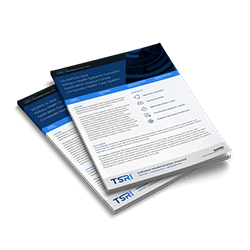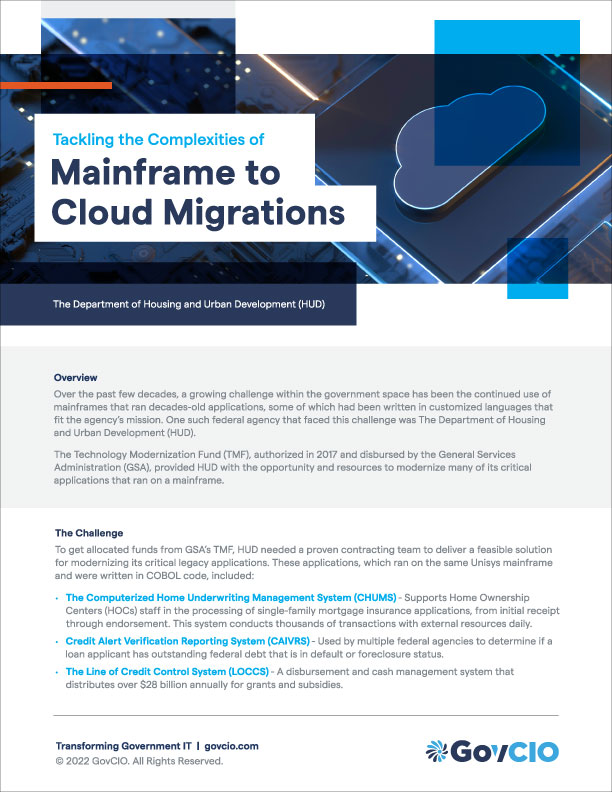Displaying items by tag: automated refactoring
Pitney Bowes - Tier 3/Comet Server VB6 to C# .NET Core Modernization on AWS
TSRI adapted its industry-leading modernization capabilities to the unique Pitney Bowes Visual Basic 6 (VB6) code constructs for a successful automatic modernization of over 443,000 lines of VB6 code and over 450,000 lines of XML meta-data to modern C# .NET Core coming in well within budget and completing the transformation earlier than scheduled.
Additionally, TSRI’s partner, Accenture, had the opportunity to manually rewrite the user interfaces for the application, to achieve a modern and user-friendly experience, while TSRI simultaneously completed the automated transformation of the application code and database written in VB6. As a result, the application achieved total functional equivalence while the look and feel of the front end was greatly improved.
 |
|
- VB6
- C#
- Automatic Refactoring
- VB6 Modernization
- architecture
- Software Modernization
- modernization
- transformation blueprint
- Microsoft SQL Server
- JANUS Studio®
- Code Warranty
- SonarQube
- Functional Equivalence
- Containerized on AWS
- C# NET Core
- Refactoring
- Data Migration
- Database Modernization
- Code Documentation
- automated refactoring
- Automated Modernization
- Cloud Native
Ada to Java & CEACIDE Jellyfish - Fire Control System
 |
|
- ada
- Java
- Code Transformation
- transformation
- automated refactoring
- modernization
- migration
- modernize
- Large application
- Code Modernization
- architecture
- well architectured
- Software code Conversion
- dod
- Department of Defense
- NGC
- Northrop Grumman
- Fire Control System Application
- Missile Defense Systems Algorithms Maturation
- MDSAM
- Embedded Systems
- Missile Defense System
- Ada code
- Ada Software Code
- Collaborative Engineering and Automation for Continuous Innovation and Deployment Environments
- CEACIDE
- Jellyfish
- Modeling Language
- New Language
- IRAD
- Ada to Java
- to Java
- Framwork
- Framework Library
- COVID 19
- classified
- Transform to Compile
- Refactoring
- Classified Systems
- partnership
- SI Team
Taking a Low-Risk Approach to Mainframe Modernization — HUD

How do you transform the slow pace of technological innovation within a federal agency into an opportunity for innovation and IT systems modernization? Start by taking a cue from the partnership between TSRI and GovCIO. With backing from the Federal Government’s Technology Modernization Fund (TMF) our joint teams propelled the US Department of Housing and Urban Development (HUD) from an outdated twentieth-century Unisys COBOL system into modern, service-oriented Java that was performant and functionally equivalent.
TSRI worked with GovGIO on their process designed to successfully migrate the applications to the Microsoft Azure cloud. They started by defining the five key project goals and taking an inventory of system components, including intersecting platforms. Once we had identified what the unique technical challenges were and how to address each, we created testing strategies and migrated the data stores for each system. Finally, we executed an automated code conversion and refactored the legacy COBOL code.
TSRI’s partnership with GovCIO executed a rapid, holistic mainframe migration process for HUD that has improved their organizational performance while minimizing risk. On day one after the productions systems were switched over from the Unisys mainframe to the Microsoft Azure cloud, the new system supported 25,356 users and 299,715 transactions with only three user problems reported. These are the HUD systems that manage, store, and protect all the personal financial and employment-related eligibility information for FHA insured financing. Given the criticality of the data managed every day by HUD, it was important that the migration run without impact on operations. The result could be seen in the first 30 days during which the new system disbursed just over $2.7 billion dollars in HUD program funds without a single error.
 Review the details of how TSRI and GovCIO successfully executed this complex modernization project in our recently published case study.
Review the details of how TSRI and GovCIO successfully executed this complex modernization project in our recently published case study.
The 9 Low-Risk Steps That Led to Success
You might be surprised that HUD and other government agencies still run their IT on mainframes using COBOL (first released in the 1950’s), or MUMPS (from the 1970’s). Running on these aging platforms presents an extensive list of challenges to these agencies: data management, growing storage, collaboration, security, etc. The modernization process typically involves risk, time, and significant expense. It’s understandable that a large agency like HUD would want to select a partner they knew could deliver a low-risk, high-accuracy result.
Working together, we adhered to GovCIO’s nine-step best-practices process that resulted in modernizing systems to modern cloud architectures that can now evolve with HUD, while preventing negative impacts to their mission, day-to-day operations, and security.

For more details on the nine-step process that enabled HUD to enter the cloud age, read our latest white paper with GovCIO.
A first-person account of HUD’s modernization process with Roger Knapp – Executive Vice President and HUD Program Manager
Only a few engineers know what it feels like to lead a major government agency through an automated mainframe modernization. Roger Knapp is one of them and has been working in the field for over 30 years. As Executive VP of Engineering & Service Delivery at TSRI, Roger has unique insights on the HUD project. He sat down to share them in an interview with GovCIO as part of their Partner Spotlight.
In a short chat, he shares how the TSRI-GovCIO team overcame the challenges not only of modernizing a nationally mission-critical system at risk of obsolescence, but also how to deal with the presence of dynamic SQL data in the legacy application logic.
Get the story straight from Roger in his interview with GovCIO.
TSRI is Here for You
As a leading provider of software modernization services, TSRI enables technology readiness for the cloud and other modern architecture environments. We bring software applications into the future quickly, accurately, and efficiently with low risk and minimal business disruption, accomplishing in months what would otherwise take years.
AWS Blog Featured Post: Automated Refactoring of a U.S. Department of Defense Mainframe to AWS
United States Air Force SBSS ILS-S COBOL to Java on AWS Modernization
A major component of the system is 54 years old, written in COBOL, and provides retail-level business logic. The component runs on mainframes that have proven to be extremely difficult to change and manage, and the DoD needed to modernize the component to drive down operating costs and move to an open platform, while retaining all functionality....
Fortran to C++ - Raytheon Patriot Missile System
Raytheon has partnered with TSRI on several successful modernization projects. Specifically, several years before the Patriot-Japan project was initiated, Raytheon was tasked with modernizing a set of Patriot Missile Simulation software. Following a formalized decision process, TSRI was selected as the best option for transforming the code from FORTRAN to C++, due to our unique fully automated transformation technology. So, when Raytheon began modernizing Battalion Simulation Support System and its Preprocessor for the Japanese Patriot Missile system, TSRI was contacted and began work.
 |
|
Ada to Java - Adv. Field Artillery Tactical Data System / Stanley
Stanley and Assoc. contracted TSRI to modernize the Battle Command Software - Advanced Field Artillery Tactical Data System (AFATDS). This system is an integrated system that provides the Army, Navy, and Marine Corps automated fire support command, control and communications. Prior to this modernization, AFATDS was written in legacy Ada-83. The target code selected for the AFATDS modernization was Java.
 |
|
COBOL to C++ - STG Inc. - WSMIS-MICAP
As part of the Logistics Management System, the Weapon System Management Information System (WSMIS) is responsible for tracking combat capability and impending parts problems. The system was well regarded during Desert Storm for its ability to expedite repair or procurement of critical items. However this legacy COBOL system requires modernization to continue to fulfill its mission.
 |
Customer: STG Inc. Source & Target Language: COBOL to C++ Lines of Code: 39,654 Duration: 4 months Services: Code Transformation, Automated Refactoring, Database Transformation, Testing and Implementation Support, Transformation Blueprint®
|
- C++
- COBOL to C++
- Code Transformation
- automated refactoring
- Database Transformation
- Testing and Implementation
- transformation blueprint
- Software code
- modernization
- migration
- US Air Force
- military
- cobol
- jcl
- batch
- Oracle 9i Database
- oracle
- database
- Windows Based
- Flat Files
- mainframe
- architecture
- amdahl
